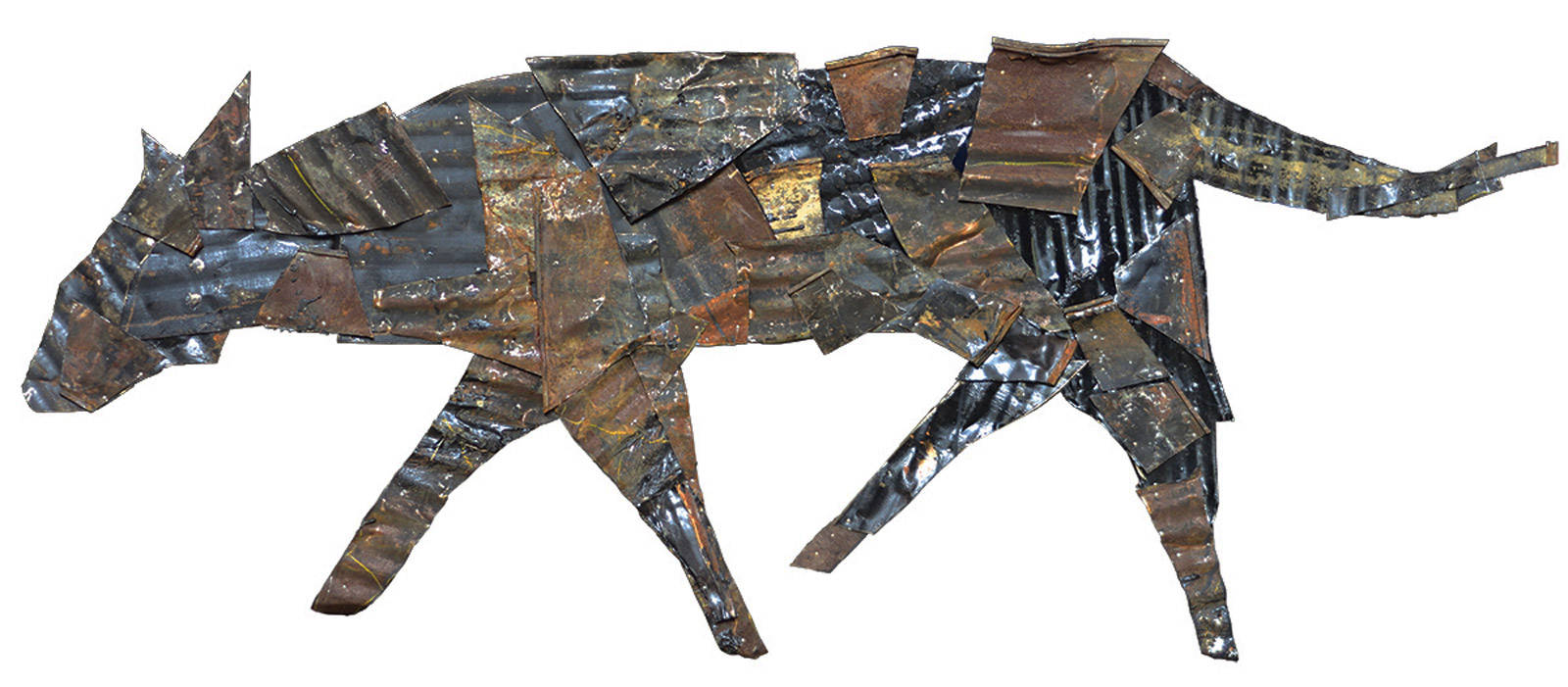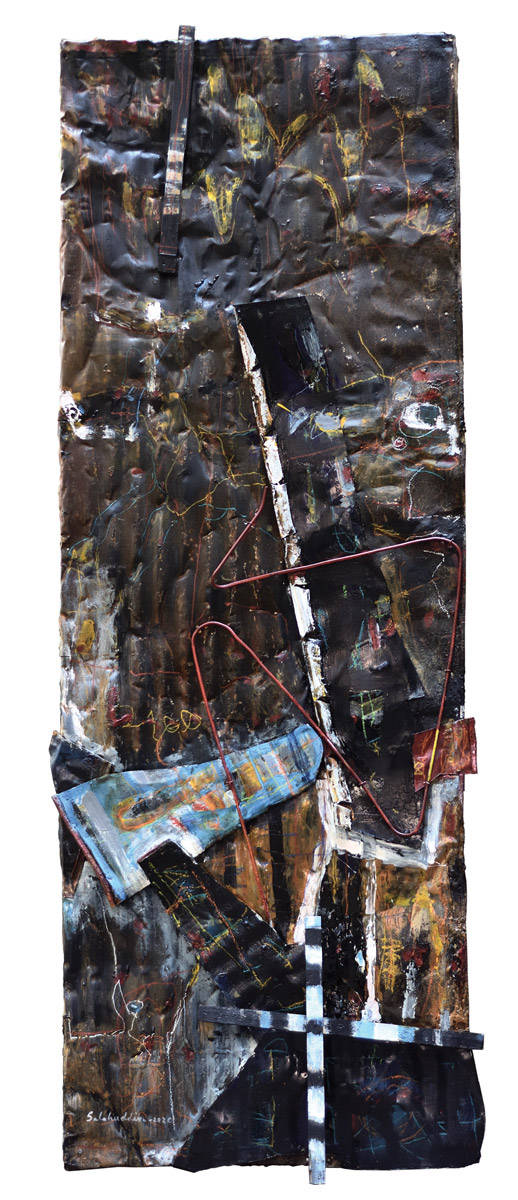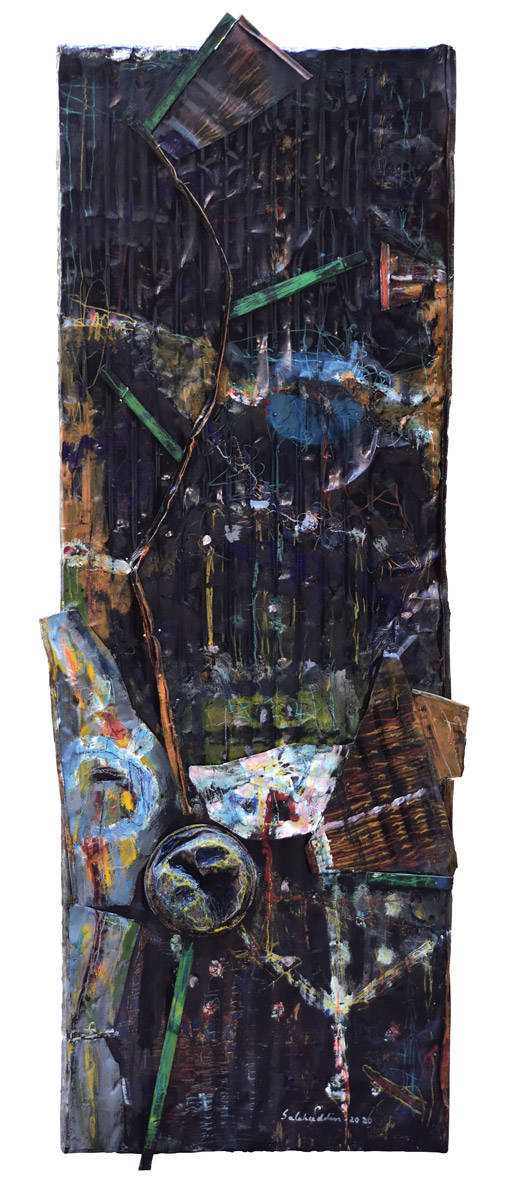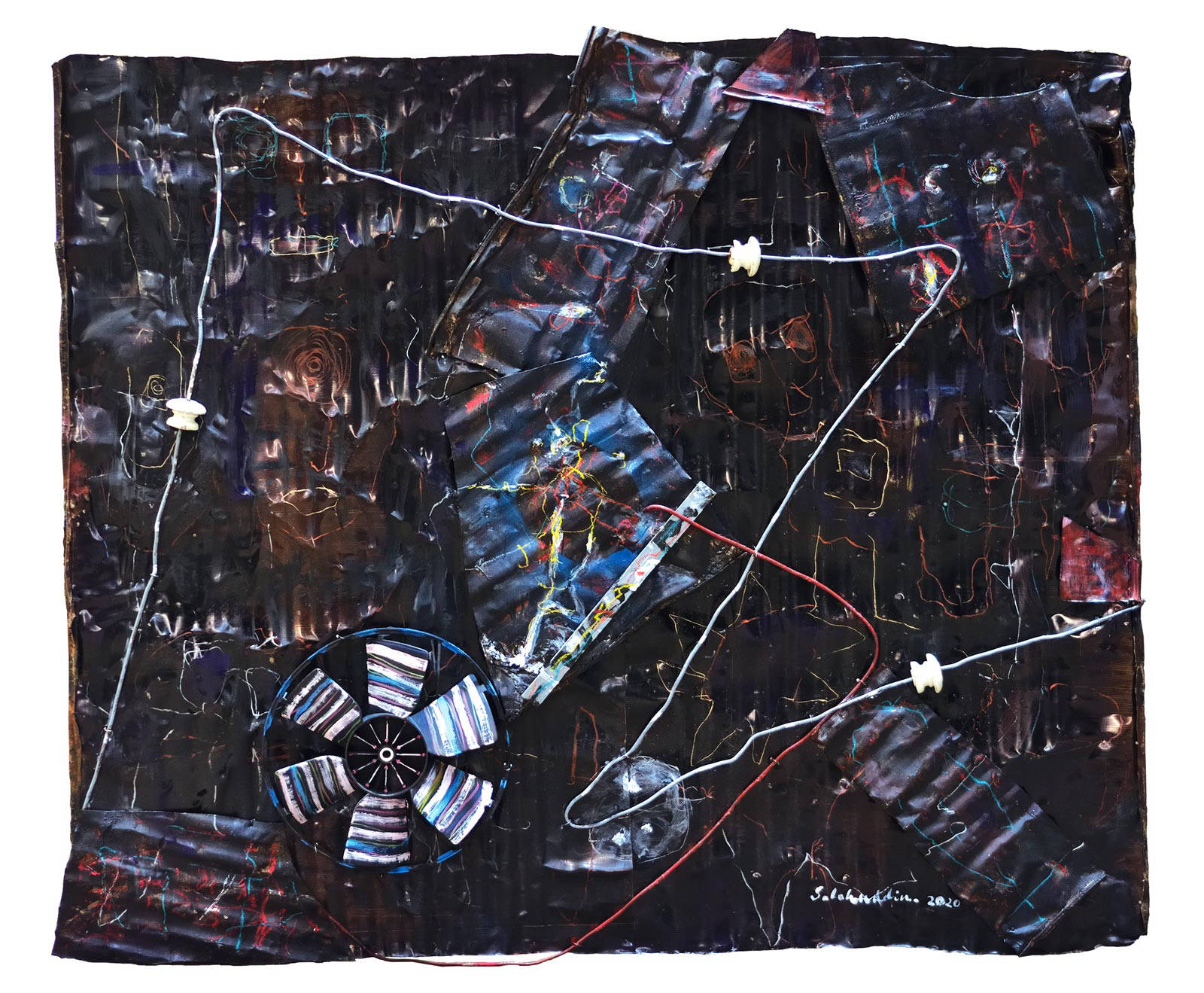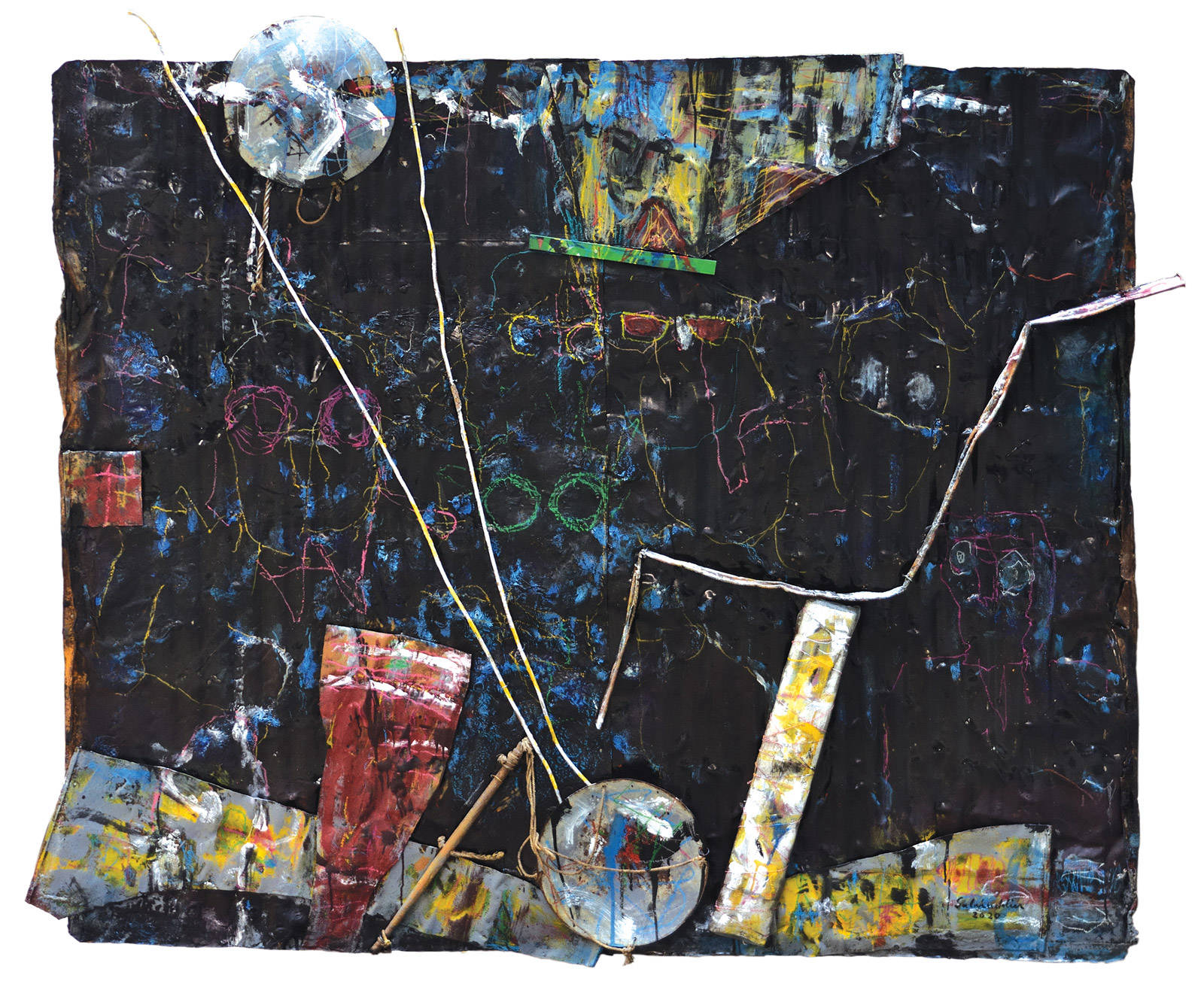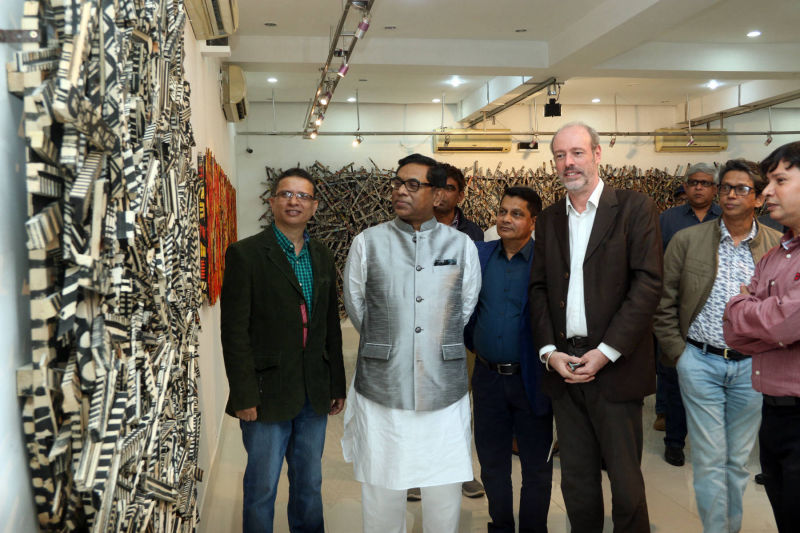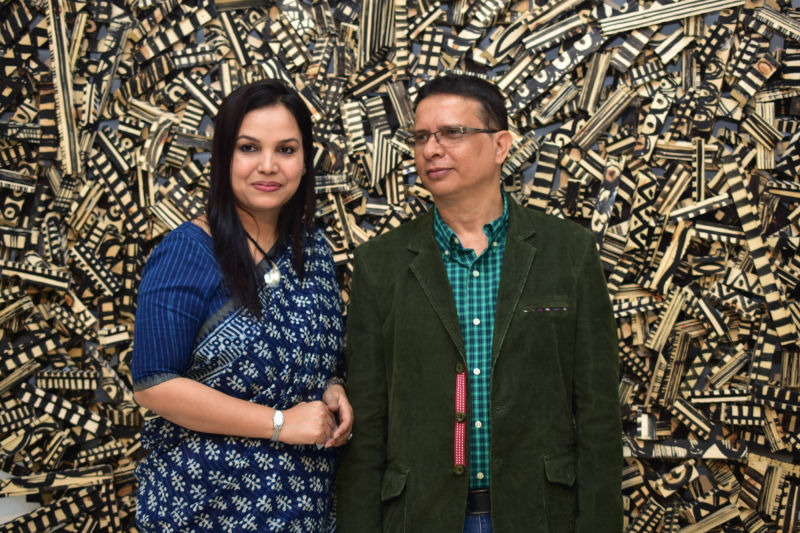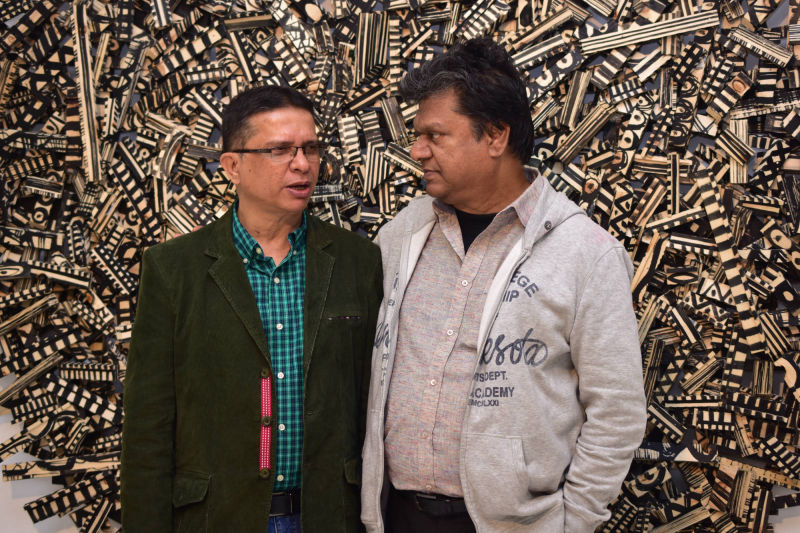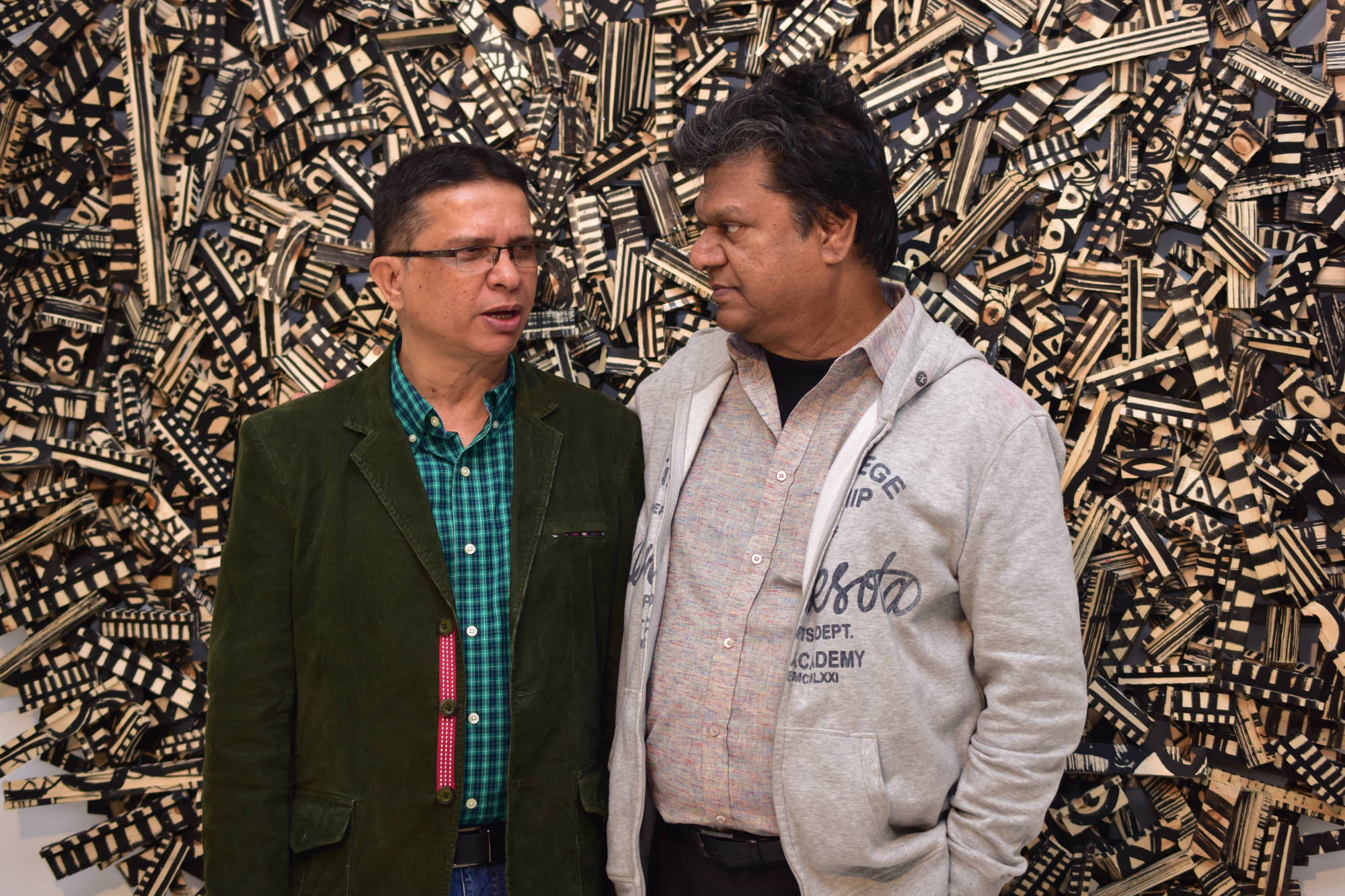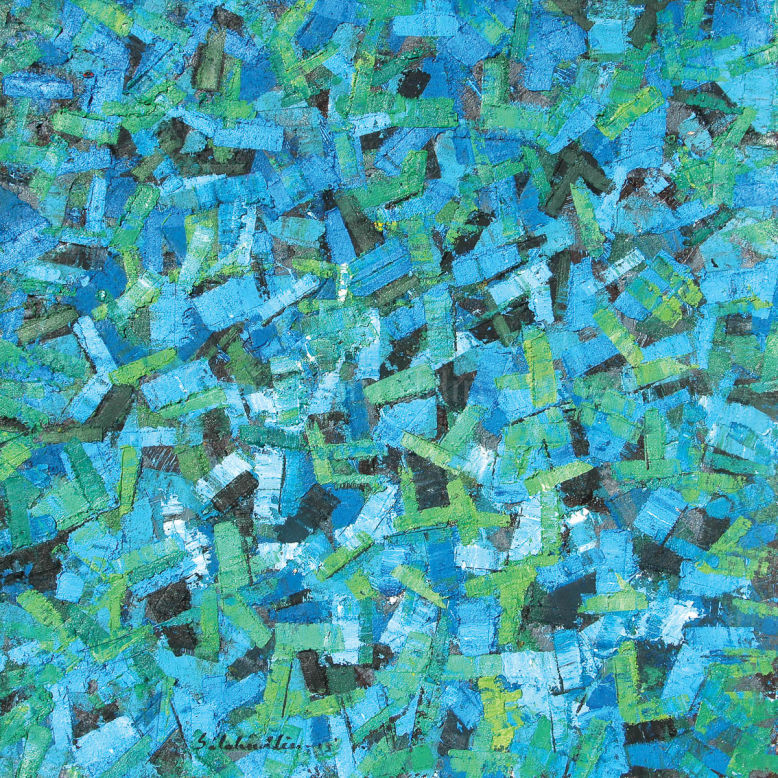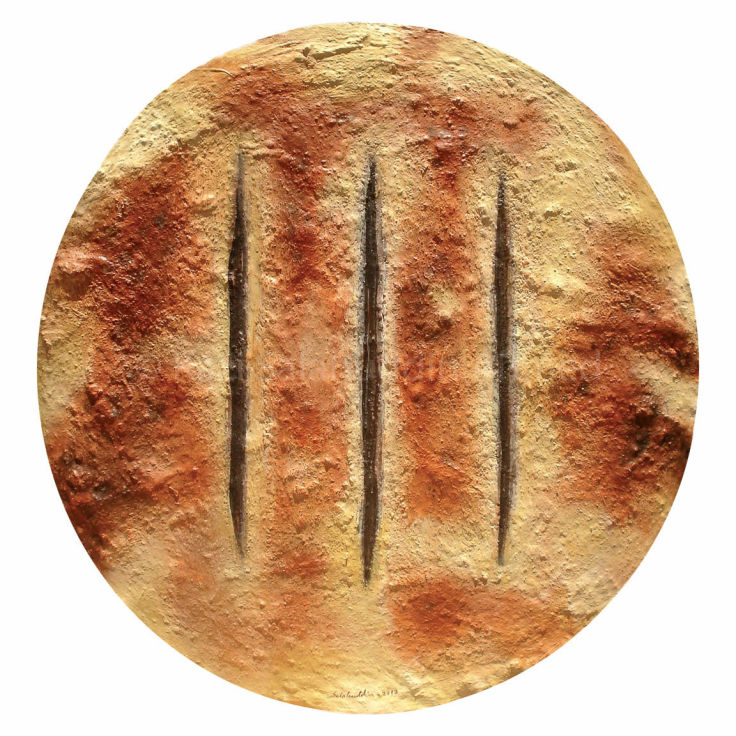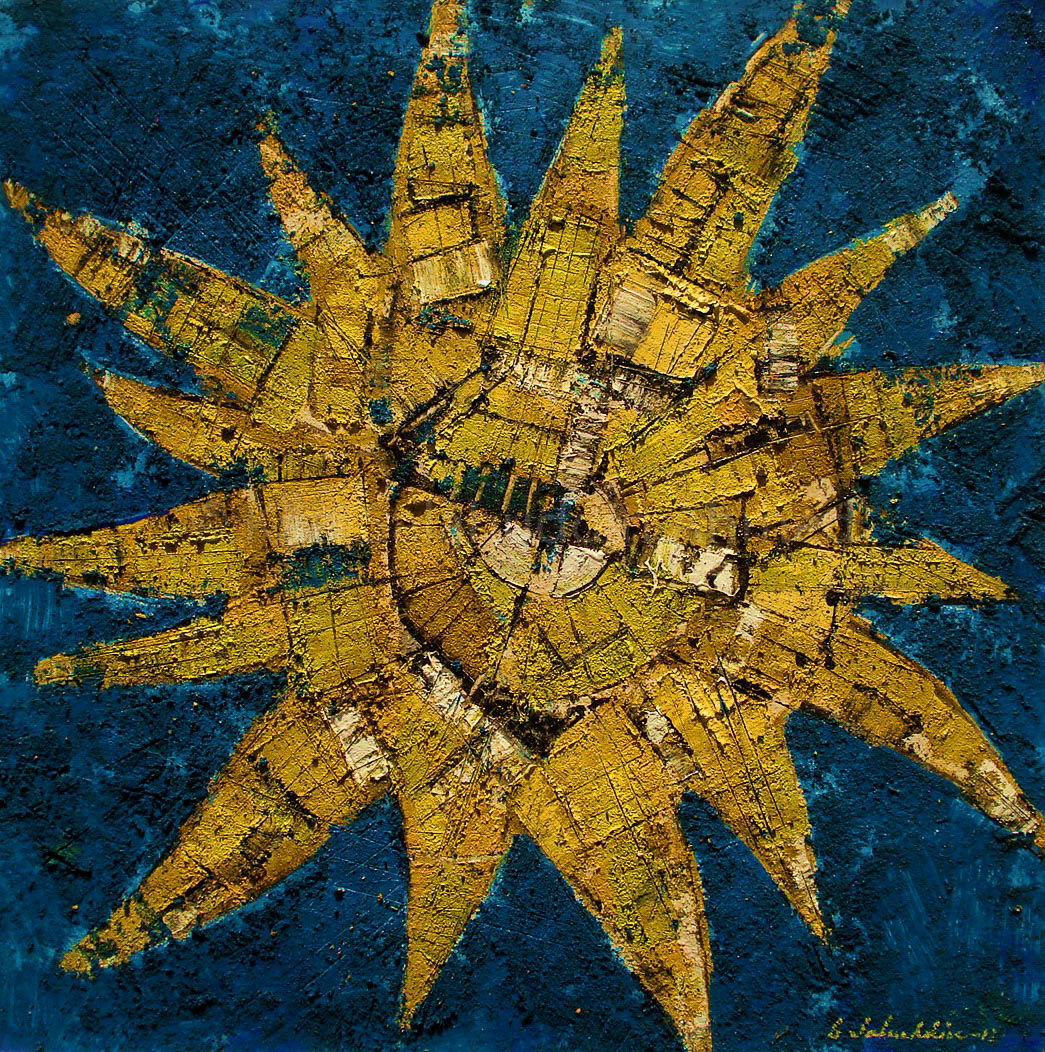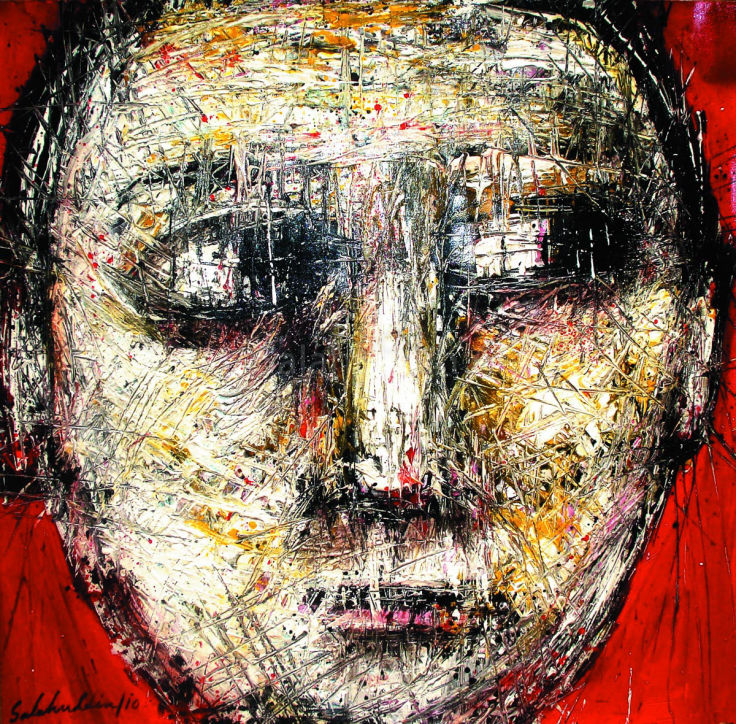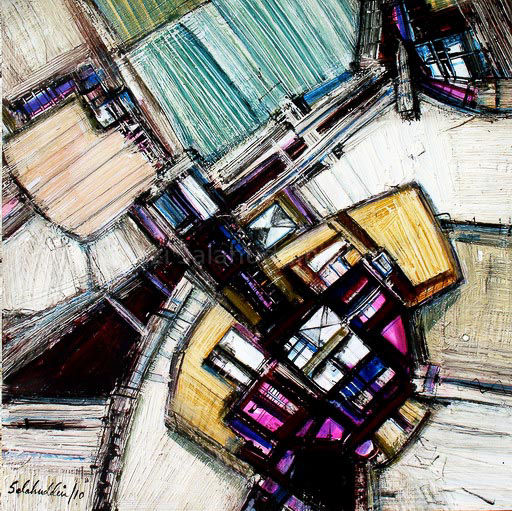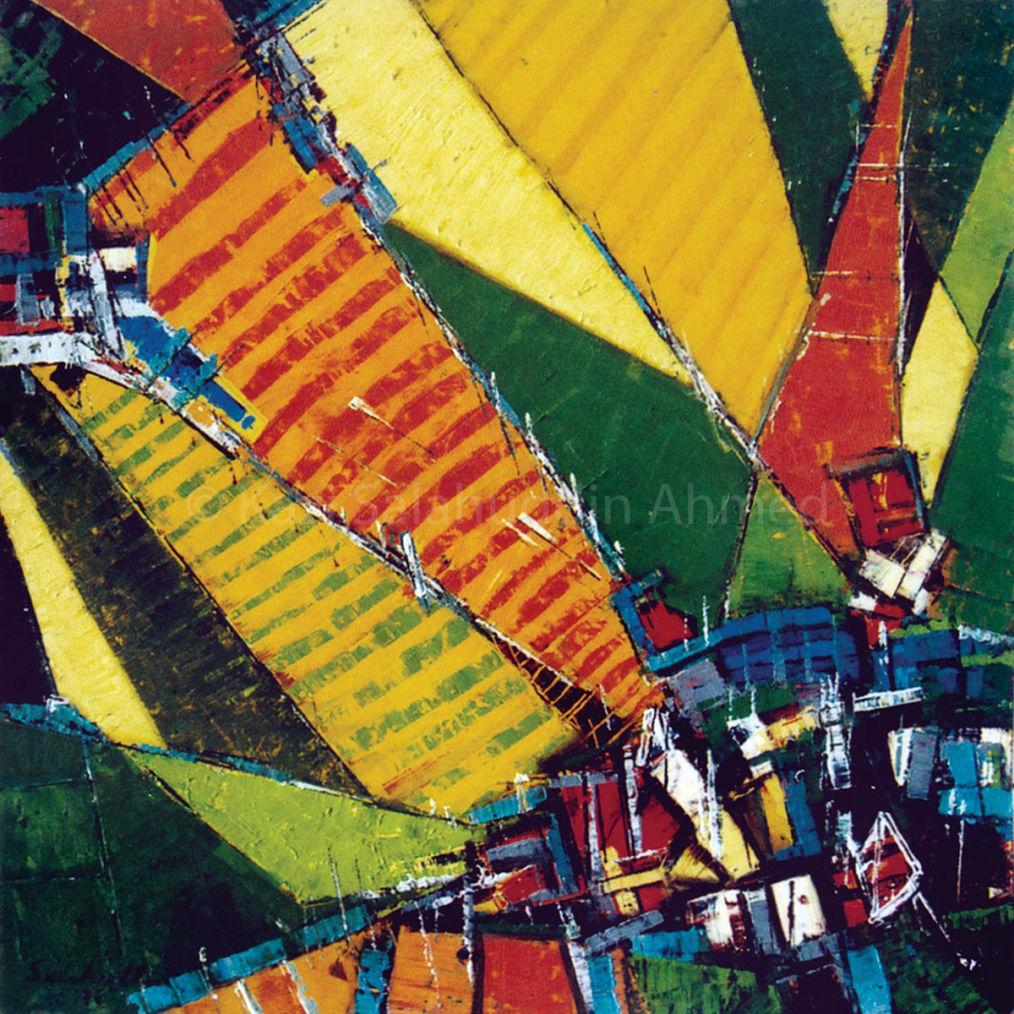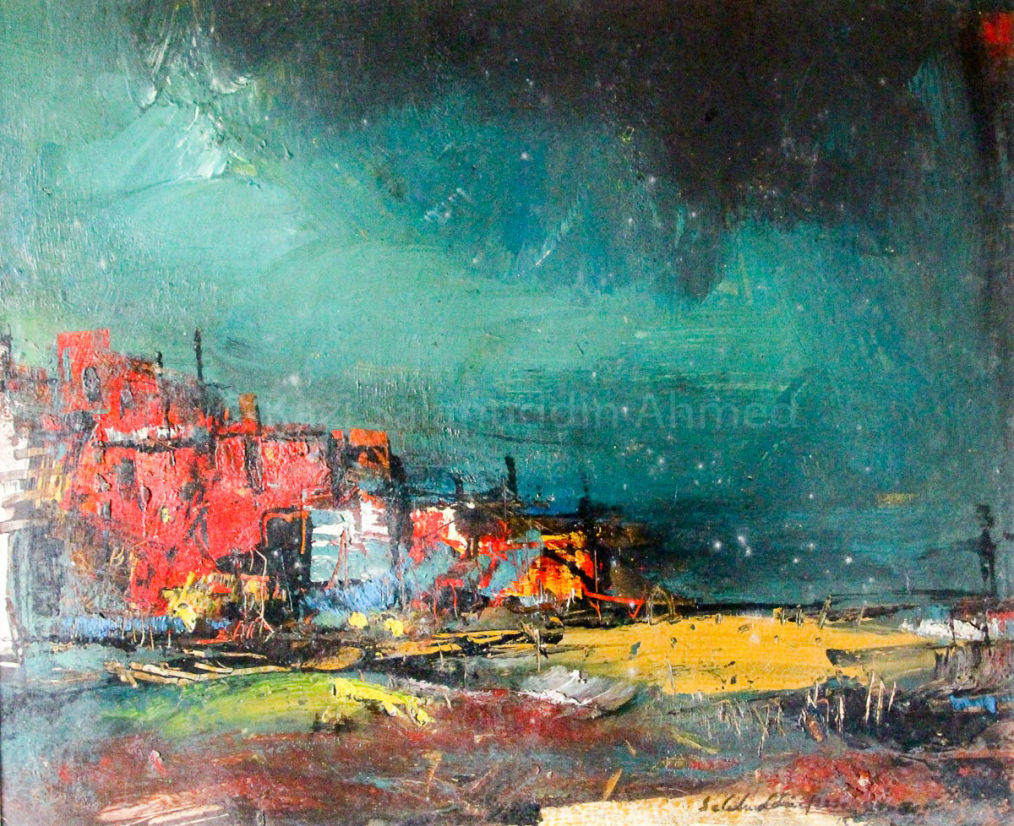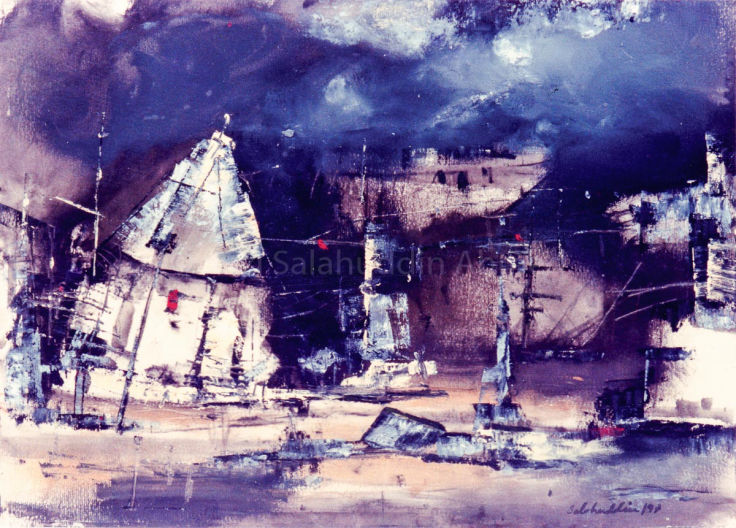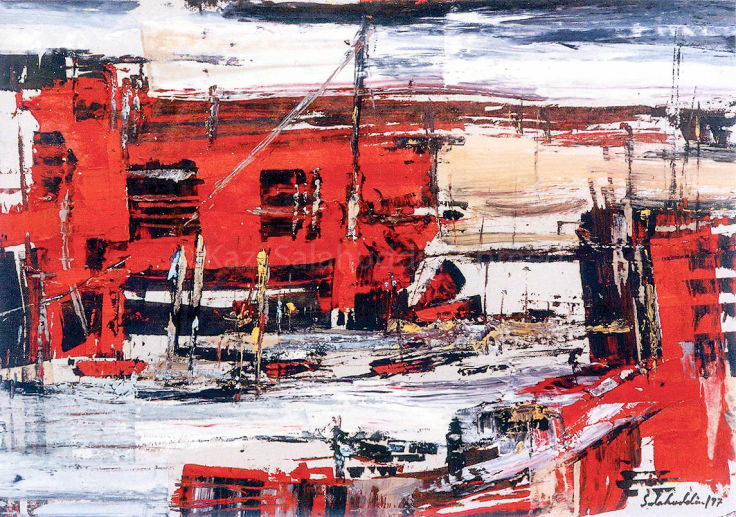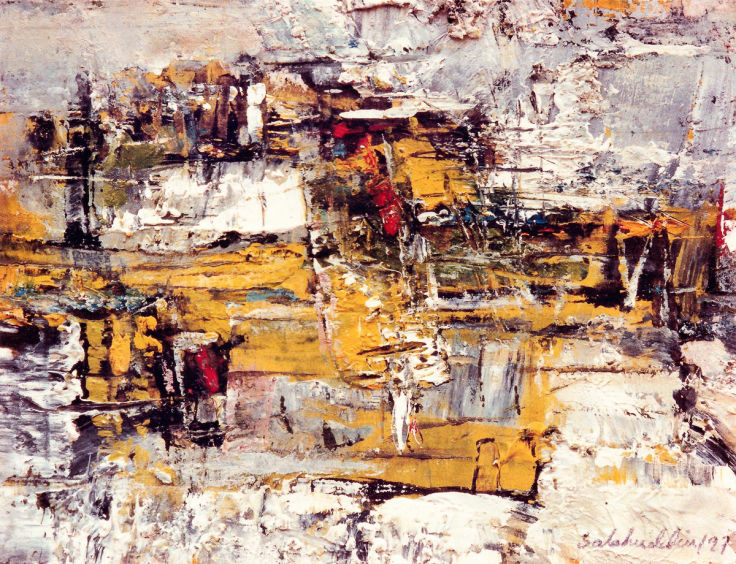11 Gates to Visual Basis
Materiality and visuality are two interconnected qualities that Kazi Salahuddin Ahmed has been employing to the advantage of the very structure of his
mixed media works. When the painter first resorted to 'found objects' to re-inscribe his abstract idiom a decade or so ago, he attached plastic pots and plates onto his canvas. He co-opted the materials that matched with his topographical propositions, which were like bird's eye views of Dhaka's heterotopic geography.
In the current installation titled '11 Gates to Visual Basics', where the artist employs mangled tin sheets from discarded drums and trays used in road
construction, a new strategy emerges. Here the material and process come together to complement each other and the artwork as an object of contemplation is displaced to let the co-opted objects – tin sheets and found objects – release a bundle of emotions and thoughts.
Though the architecture of all eleven pieces resides in a field of ambiguity, from their very existence catastrophes and their effects on the human psyche can easily be deciphered.
Catastrophes have an uncanny power to linger on people engaged in world-making from within the social/mental sphere. However, Salahuddin's
emplotment of a visual language developed with the scraps of metal sheet not only works like a vassal for memory but also serves as a conduit that leads one to the actual world – both man-made and natural.
In fact, the installation gives rise to a tangle of effects – it takes the viewers closer to the consequences that await all human constructions. And also
hints at the human survival instinct linked to the idea of building. The artist forms an alliance with objects with the minimum of intervention. The
markings and painted areas – they let the objects retain their original character.
If art is a form of mediation, 11 Gates to Visual Basics almost bridges the gap between the man-made and the natural. Salahuddin's new creation unpeels
some of the most relevant narratives of urban disaster as well as civilisational implications. They recent fires in Old Dhaka factories, though are only hinted at, the works clearly demonstrate how the man-made is flimsy and ephemeral, as opposed to the natural.
On the question of time, this exhibition also threads the past with the future by letting us know that things must go through mutations – that is the
eternal natural cycle the work acknowledges.
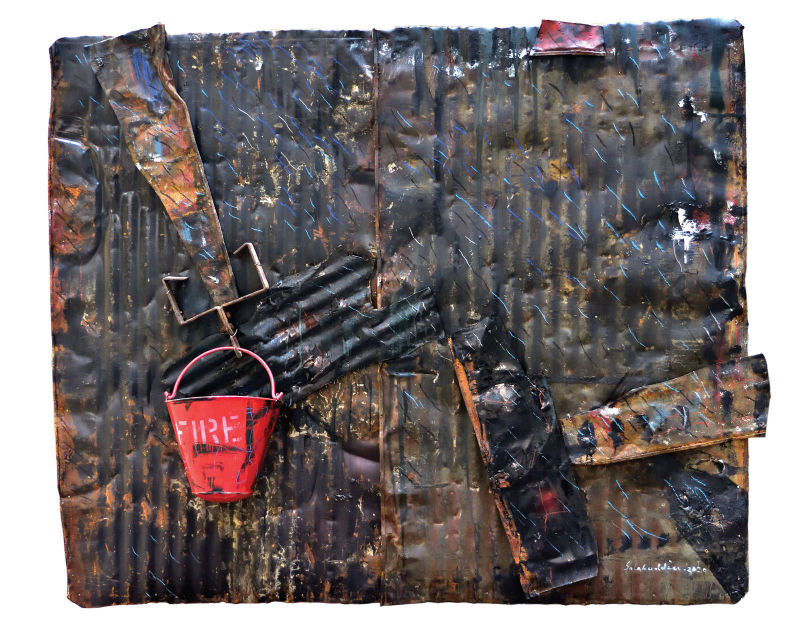 Reconstructing a Site - 7 Size: 152 cm X 182 cm Media: enamel, pastel and bitumen on metal sheet
Reconstructing a Site - 7 Size: 152 cm X 182 cm Media: enamel, pastel and bitumen on metal sheet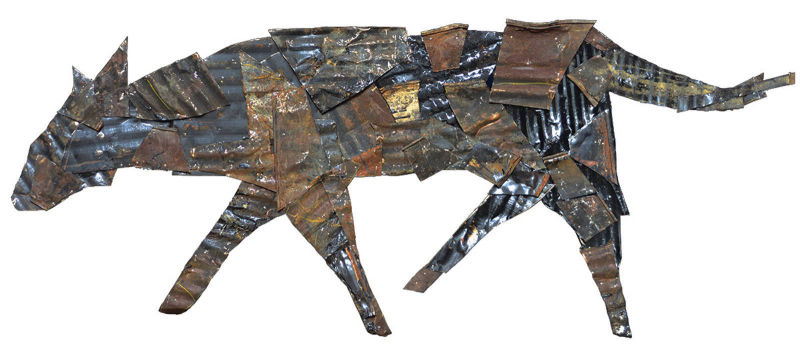 Reconstructing a Sight - 2 Size: 152 cm X 91 cm Media: Oil pastel, Bitumen Paint
Reconstructing a Sight - 2 Size: 152 cm X 91 cm Media: Oil pastel, Bitumen Paint Reconstructing a Site - 3
Reconstructing a Site - 3
 Reconstructing a Site - 4
Reconstructing a Site - 4
 Reconstructing a Site - 2
Reconstructing a Site - 2
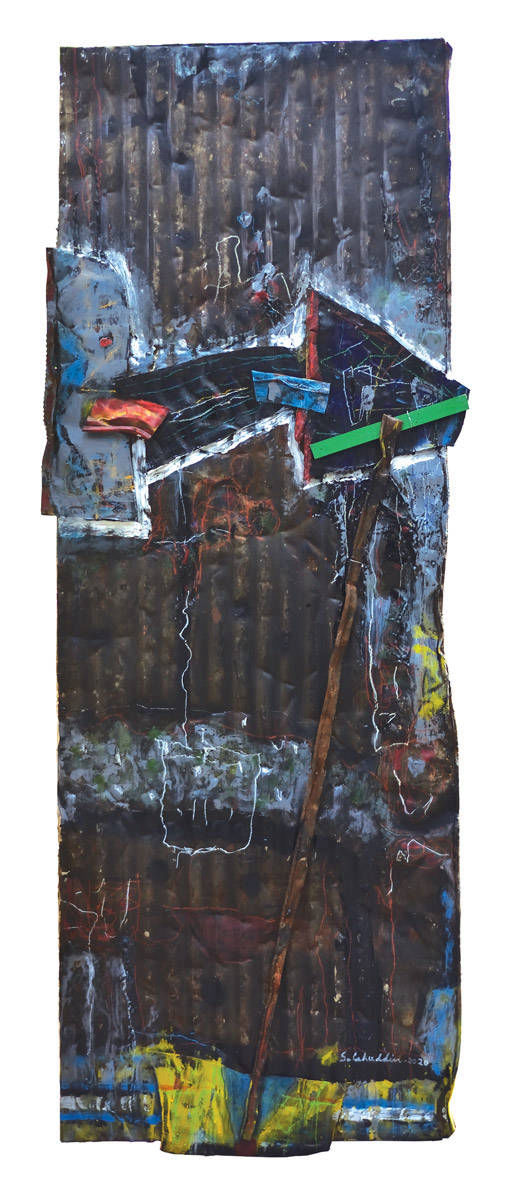 Reconstructing a Site - 1
Reconstructing a Site - 1
 Reconstructing a Site - 5 Size: 152 cm X 182 cm Media: Media: enamel, pastel and bitumen on metal sheet
Reconstructing a Site - 5 Size: 152 cm X 182 cm Media: Media: enamel, pastel and bitumen on metal sheet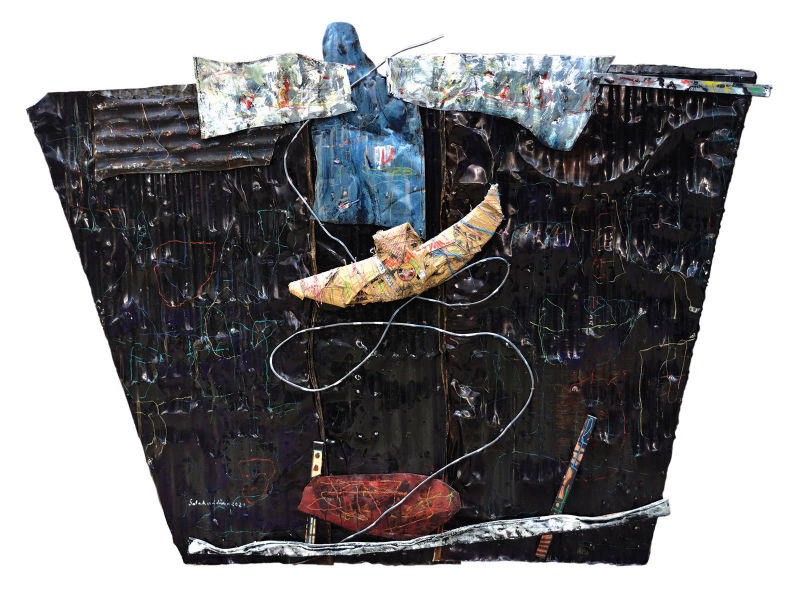 Reconstructing a Site - 6 Size: 165 cm X 213 cm Media: Media: enamel, pastel and bitumen on metal sheet
Reconstructing a Site - 6 Size: 165 cm X 213 cm Media: Media: enamel, pastel and bitumen on metal sheet Reconstructing a Site - 8 Size: 152 cm X 182 cm Media: Media: enamel, pastel and bitumen on metal sheet
Reconstructing a Site - 8 Size: 152 cm X 182 cm Media: Media: enamel, pastel and bitumen on metal sheet
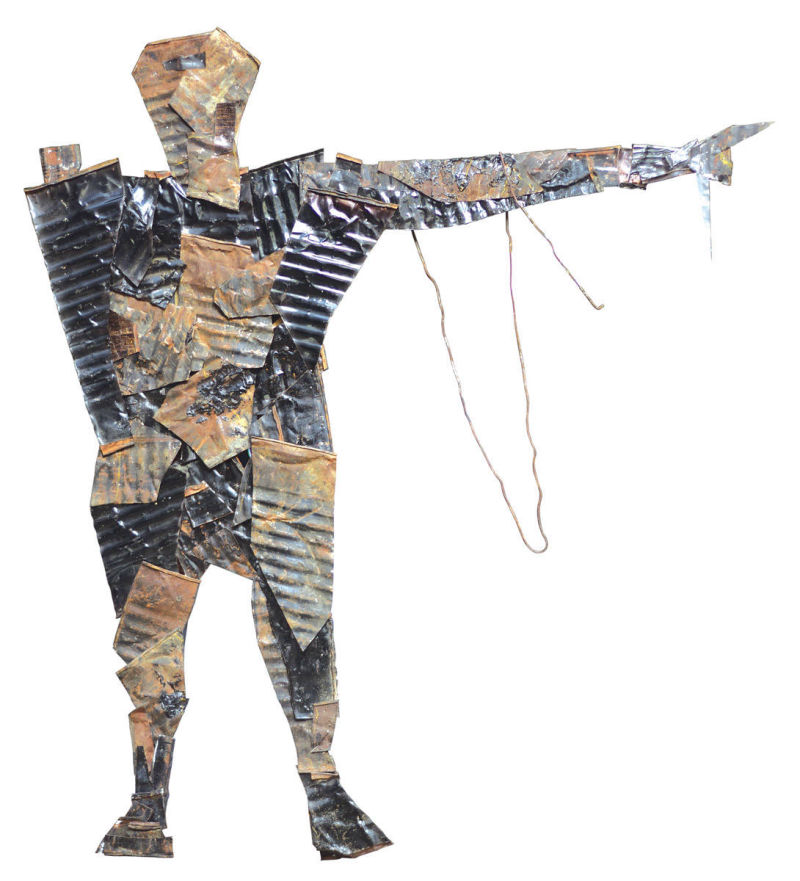 Reconstructing a Sight - 1
Reconstructing a Sight - 1
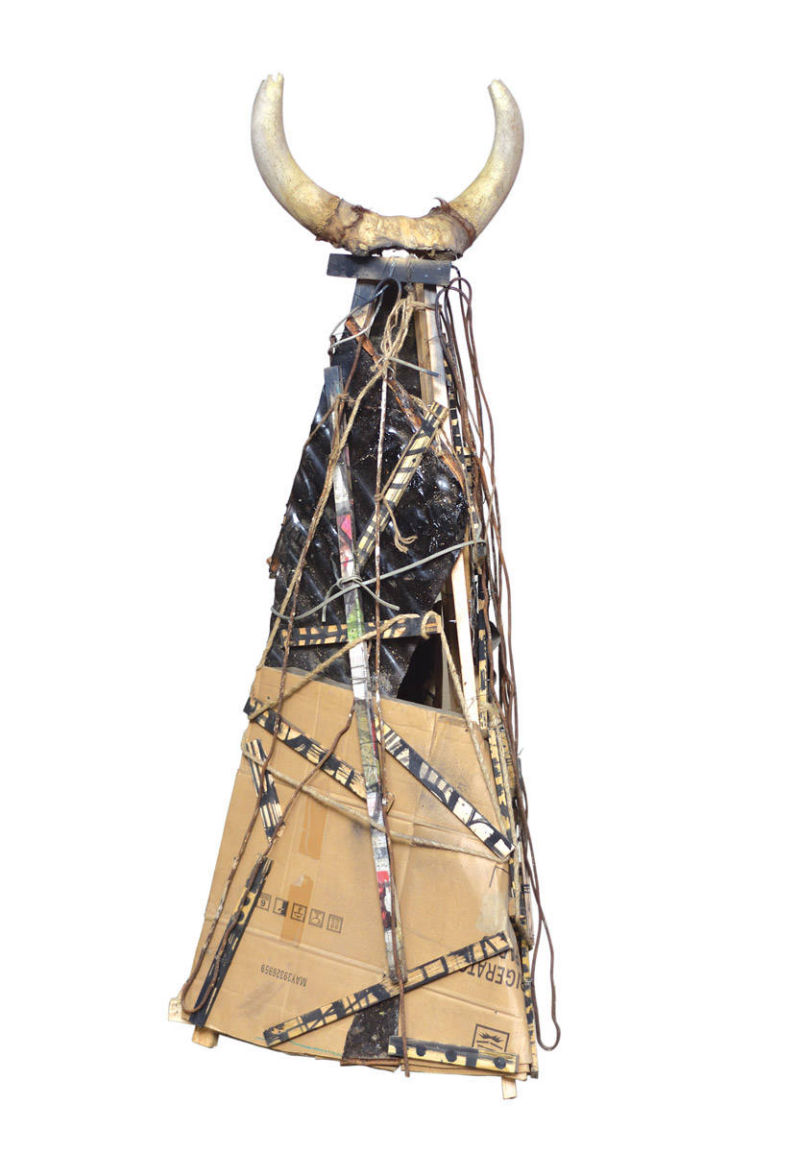 Reconstructing a Site - 9 Size: 177 cm X 81 cm Media: enamel, pastel and bitumen on metal sheet
Reconstructing a Site - 9 Size: 177 cm X 81 cm Media: enamel, pastel and bitumen on metal sheet
